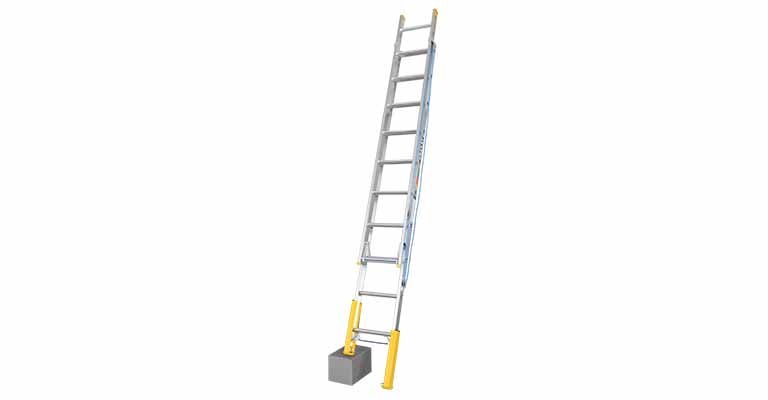Extension Ladder Safety
• Ensure that the ladder is on firm level surface and both feet are in contact with the ground.
• Where the ground is firm but uneven, use a Bailey® Leveller Extension Ladder
• Check that stiles/rungs/clutch/pulley/rope/guides and feet are in sound condition prior to use. NEVER USE THE LADDER IF ANY OF THESE PARTS ARE MISSING OR DAMAGED.
• Always face the ladder when ascending or descending.
• Ensure that three limbs are in contact with the ladder at all times.
• Always position the ladder at the correct angle. For every four metres of unsupported ladder length the base of the ladder should be one metre from the bottom of the vertical wall. Care should be taken when estimating the distance from the vertical if the structure is not 90 degrees from the ground (e.g. sloping ground or sloping wall).
• The ladder must be extended one metre, or three rungs, past the top of the structure. Alternatively we recommend using a Bailey StepThru Extension Ladder Safety Device.
• The ladder should be secured against slipping at both the top and the base of the ladder.
• Ensure that the surface the ladder is resting against is flat and is in sound condition.
• Pole straps must be used against structures such as trees and poles.
• Never use a metal ladder or a timber ladder with metal stile reinforcing where an electrical hazard exists.
• Do not climb from one ladder to another.
• Do not use an extension ladder in a horizontal position.(e.g. as a bridging structure).
• Do not exceed the load rating of the ladder.
• Do not use a ‘Domestic’ duty rated ladder for frequent heavy use, or in a workplace, an ‘Industrial’ duty rated ladder must be used.
• Ensure the clutch is ‘fully engaged’ before climbing.

